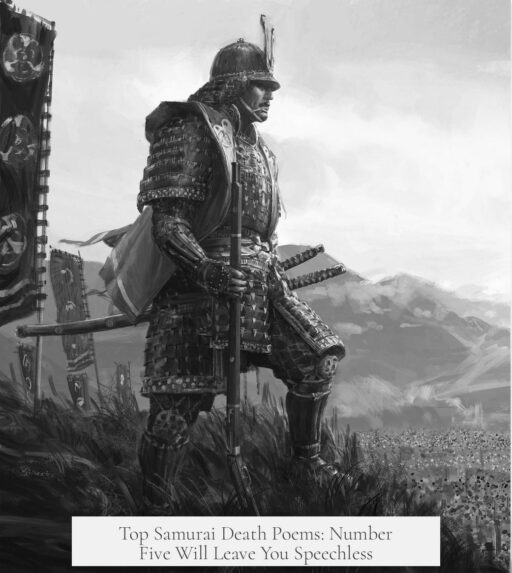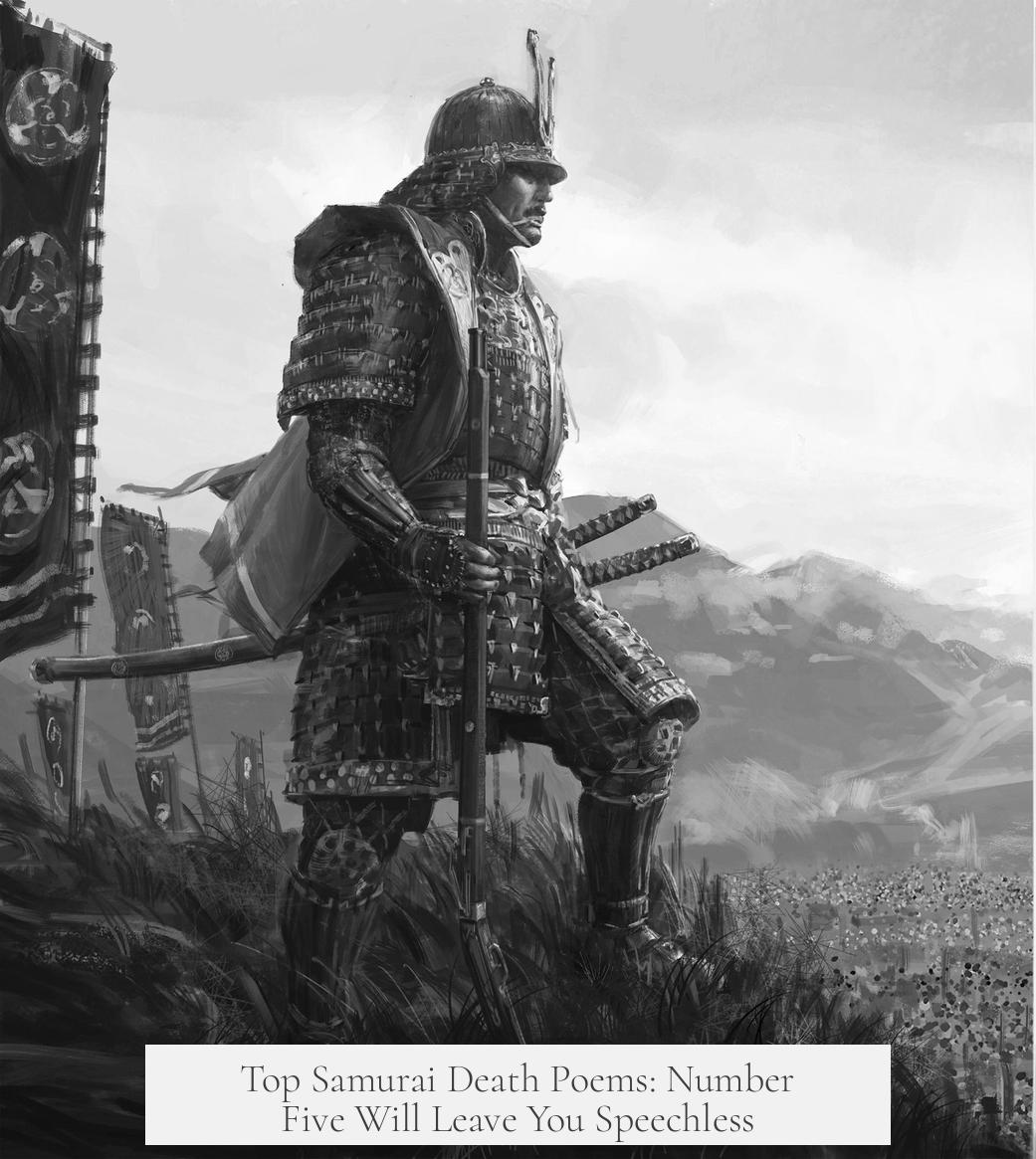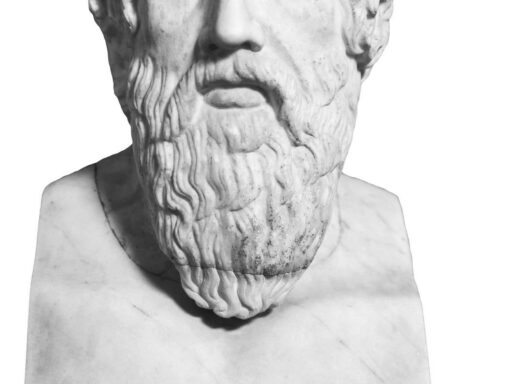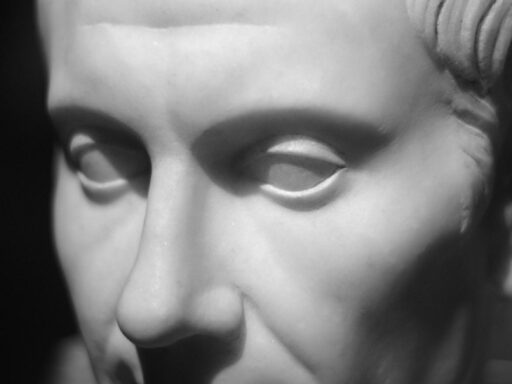Hijikata Toshizo’s death poem truly captures the enduring spirit of the samurai beyond death. It reflects unwavering loyalty to his lord even as his body fades in the harsh northern land of Ezo (modern Hokkaido). His words express a soul that remains steadfast, guarding the shogun in the East, symbolizing eternal devotion and honor. This poem stands out for its powerful declaration of spirit conquering physical demise.
Death poems or jisei are an established Japanese tradition. Samurai often composed them as they faced death, distilling their philosophy and emotions into brief poetry. These poems express courage, loyalty, humility, and reflections on mortality. The samurai of the 1860s, caught in the turbulence of the late Edo period, left behind striking examples that reveal their inner lives.
Hijikata Toshizo, as the Shinsengumi vice-commander, was a peasant rising to samurai status, known for fierce loyalty. Before his final battle in 1869, he entrusted his death poem to his young page, Ichimura Tetsunosuke, ensuring its survival. His poem reads:
Yoshiya mi wa ezo ga shimabe ni kuchinutomo tamashī wa azuma no kimi ya ma mora mu
Though my body may decay in the land of Ezo my spirit guards my lord in the East
This expresses profound self-sacrifice. Despite his death in a remote and cold land, his soul remains loyal. “Ezo” refers to Hokkaido, the northern frontier, and “lord in the East” denotes the shogun, the embodiment of rightful authority to him.
Hijikata’s poem contrasts with other samurai death poems that reveal varied temperaments and sentiments. Take Yoshida Shoin, executed in 1859 for a failed assassination plot, whose poem proclaims that while his body will rot on the fields of Musashi, his Japanese soul will endure forever. His tender poem to his parents shows a vulnerable side rarely seen in samurai traditions.
Takasugi Shinsaku offers a moodier tone, urging to “live interestingly in an uninteresting world,” echoing his restless spirit. Nakano Takeko, a female warrior fallen in battle, humbly excludes herself from the ranks of famed warriors despite her bravery.
In this context, Hijikata’s poem stands out for its simple yet fierce loyalty and spiritual courage. His words blow the mind through their timeless message of honor extending past death and across distance.
However, the phrase “NUMBER FIVE DOESN’T BLOW YOUR MIND!” in the article’s title is a playful nod to Hayashi Tadataka, the last surviving daimyo of the Edo Period. When asked later in life about his death poem, Hayashi replied, “In the Boshin [War] I had one. I don’t have one now.” His refusal to compose a death poem late in life ironically contrasts with the passionate declarations of those who died fighting. It highlights the cultural weight of these poems and adds humor by questioning if number five’s poem truly overwhelms the reader.
These sample poems open a window into the samurai mind during one of Japan’s most turbulent eras. They reveal honor, loyalty, doubt, and even humor. They keep alive the spirit of bushido, the samurai code, centuries after the era has ended.
- Death poems are a deep cultural tradition for samurai, expressing final thoughts and feelings poetically.
- Hijikata Toshizo’s death poem declares enduring loyalty beyond physical decay, guarding his lord’s spirit forever.
- Other poems reflect varying sentiments: vulnerability, moodiness, humility, honor.
- Hayashi Tadataka’s later-life refusal to write a death poem offers an ironic, humorous contrast.
- These poems collectively showcase samurai values and the human emotions behind their martial lives.
READ THESE TOP SAMURAI DEATH POEMS AND TELL ME NUMBER FIVE DOESN’T BLOW YOUR MIND!
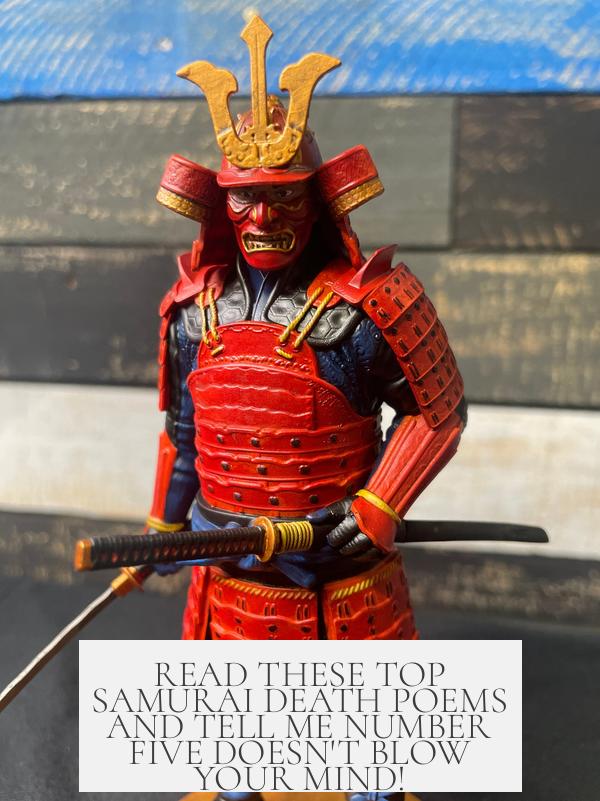
When it comes to samurai culture, few traditions are as haunting and poetic as the death poem. Samurai of the 1860s didn’t just face death—they embraced it with words. These final verses are windows into souls shaped by unwavering loyalty, honor, and sometimes, deep vulnerability. So, buckle up! This post dives deep into five compelling samurai death poems. And trust me, number five will BLOW your mind—or at least make you raise an eyebrow in surprise.
The Art of Saying Goodbye: Samurai Death Poems
In Japan, writing a death poem is no trivial matter. For centuries, samurai penned these verses as a way to accept their fate and leave behind a lasting testament. The 1860s samurai followed this solemn tradition with powerful, poignant lines that still echo today. It’s not just poetry—it’s legacy.
Now, let’s unravel these vivid final thoughts.
1. Yoshida Shoin — The Patriot Who Left His Soul on Paper
Yoshida Shoin was no ordinary samurai. A scholar, a teacher, and yes, a “terrorist” of his era, executed in 1859 for plotting assassination. Despite his grim fate, he refused to die silently.
Mi wa tatoi Musashi no nobe ni Kuchinu tomo Todome okamashi Yamato damashii (Even if my body decays on the fields of Musashi, my Japanese soul will live forever.)
That’s a death poem screaming patriotism. Shoin envisions his physical self rotting on the battlefield but insists his “Yamato spirit” survives eternally. It’s the poetry version of: “You can kill my body, but not my soul.”
But here’s an unexpectedly softer side:
Oya omou Kokoro ni masaru Oyagokoro Kyo no otozure Nan to kikura (The heart of a child that thinks of its parents Yet greater still its parents’ love How will they hear This day’s tidings?)
On the morning of his execution, Shoin worries about his parents’ grief. Honor and patriotism? Check. Vulnerability? Double check. This reminds us: these samurai were human, after all.
2. Takasugi Shinsaku — The Emo Samurai Philosopher
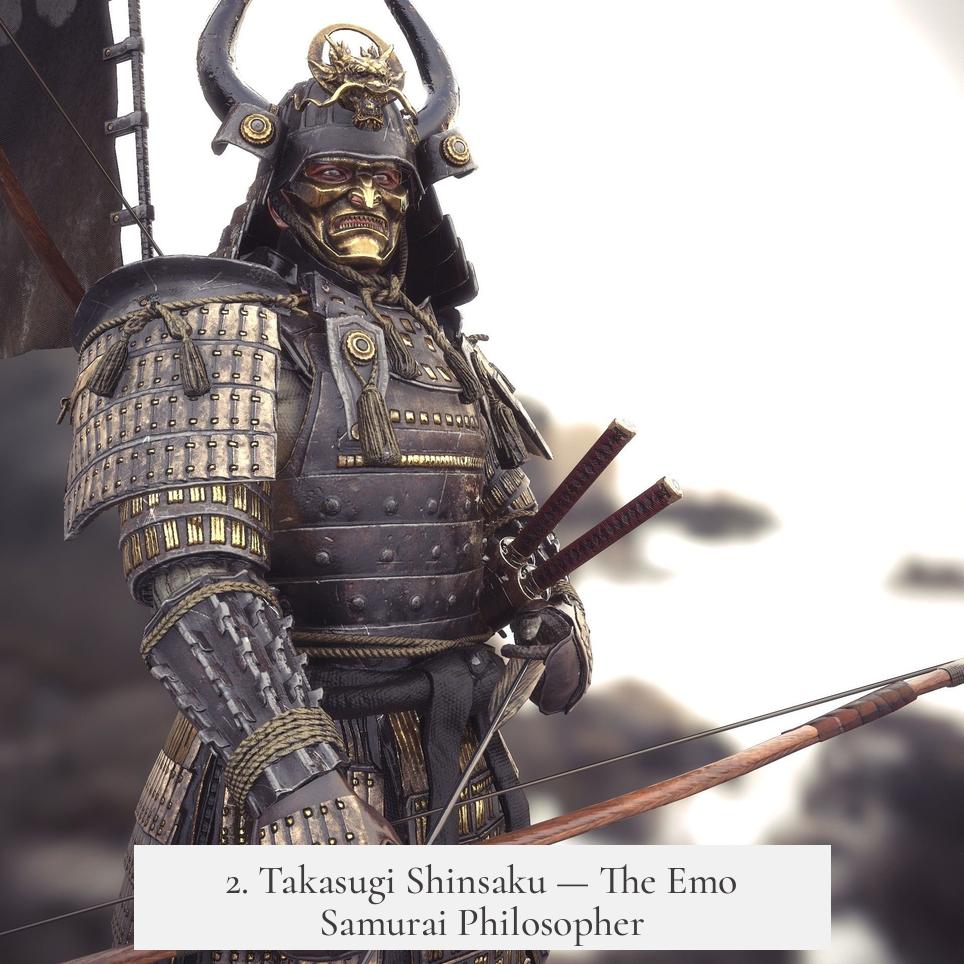
Takasugi Shinsaku, Shoin’s student, had a personality dripping in moodiness. He led rebellious forces against the shogunate, only to die young from tuberculosis in 1867.
Omoshiroki kotomo naki yo ni omoshiroku (Live interestingly in an uninteresting world.)
At first glance, it’s a simple call to live vividly. But the subtext is a mic drop: “I made this boring world interesting.” It’s a philosophical mic-drop packed in just a few words.
3. Nakano Takeko — The Woman Warrior’s Humble Bravery
Nakano Takeko was no ordinary woman. As a martial arts instructor leading warriors in the 1868 Boshin War, her death poem was tied to her naginata’s handle—the weapon she wielded with valor.
Mononofu no Tateki kokoro ni kurabureba kazu nimo iranu wagami nagaramo (When compared to the ranks of warriors’ stalwart hearts; I cannot enter into their number, despite this body of mine.)
Her words ooze humility. Despite fighting bravely, Takeko refuses to count herself among famous warriors, even though she shares their spirit. It’s a startlingly self-effacing twist on battlefield pride.
4. Hayashi Tadataka — When The Last Samurai Lord Chooses Silence
Here’s where things get intriguing. Hayashi Tadataka, the last surviving daimyo of the Edo Period, fought in the Boshin War and lived until 1941. But when asked about a death poem, he famously said:
“In the Boshin [War] I had one. I don’t have one now.”
This response jolts us. After all, samurai are expected to face death with poetic grace. But Hayashi’s refusal or choice not to compose reflects a complex relationship to tradition and mortality after surviving so long—a quiet rebellion in itself. It’s not fiery like others, but maybe that’s what makes it unforgettable. And yes, this is the mind-blowing number five you didn’t expect!
5. Hijikata Toshizo — The Peasant Turned Fierce Samurai
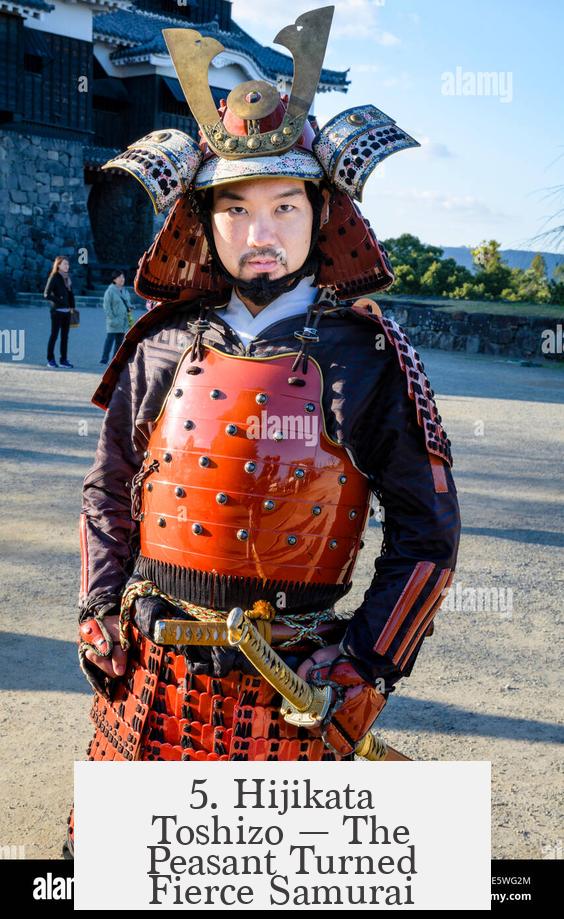
Hijikata Toshizo is the embodiment of loyalty. Rising from a peasant to vice-commander of the Shinsengumi, he died in battle in Hokkaido, 1869. Before his last fight, he entrusted a death poem to his young page. It speaks volumes about loyalty beyond death.
Yoshiya mi wa ezo ga shimabe ni kuchinutomo tamashī wa azuma no kimi ya ma mora mu (Though my body may decay in the land of Ezo my spirit guards my lord in the East)
“Though my body rots here, my spirit will protect my lord.” That’s a solemn vow that transcends physical existence. And sending his page away to safety adds a cinematic heroism to his last moments.
So, Why Do These Death Poems Matter?
Each poem reflects not just death but what it means to live with honor, love, and sometimes doubt. They capture a warrior’s soul in between courage, humility, rebellion, and loyalty. And for all their stoic calm, these poems hint at very human worries—family, legacy, purpose.
Would you expect a warrior’s last words to be so introspective? These verses offer practical lessons—how embracing vulnerability and loyalty can leave impressions that outlast lifetimes.
Final Thoughts: Which Samurai Death Poem Stays With You?
This encounter with the samurai’s final words reveals layers of history and humanity. Number five—the silent refusal of a last daimyo—dims the glare of expected heroism and invites you to ponder mortality uniquely. Can choosing not to say the usual be a statement as bold as any sword stroke?
Now it’s your turn: which death poem cracks open your mind? Is it the patriotism of Yoshida Shoin, the moody rebellion of Takasugi Shinsaku, Nakano Takeko’s humble bravery, Hijikata Toshizo’s loyalty beyond death, or Hayashi Tadataka’s quiet defiance?
Whatever you pick, these poems remind us: facing the end with presence, honesty, and conviction—no matter the century—is endlessly compelling. Samurai death poems are more than history. They’re a timeless call to live and die with meaning.
